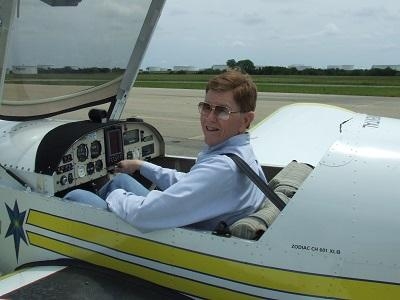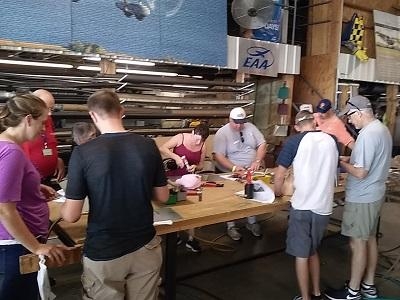Numerous Forums Presented At The Event Which Included Loss Of Control Prevention
The Zenith Aircraft 25th anniversary Open House Fly-in at their Mexico, Mo factory turned out to be a fantastic event. Among the many things that took place were numerous forums covering subjects ranging from regulations, to aircraft building, to improving pilot techniques.

ANN’s Assistant News Editor, Earl Downs, flew his Zenith 601XL-B from his home location in Oklahoma to the Zenith Factory to join in the fun and to present a forum about his favorite subject, which is the prevention of loss of control accidents. Earl is an experienced flight instructor who has been dealing with these issues for years in his training programs that prepare pilots to test fly homebuilt airplanes.
Earl holds some views that are held by many, but they don’t exactly line up with what the FAA is saying about loss of control prevention. Earl puts it this way, “The FAA seems to imply that loss of control accidents occur because the airplane does something wrong. Their answer to this is to promote aircraft technology that will prevent an airplane from entering a regime of flight from which it cannot be recovered. Put simply, technology can be of great value, but I believe the pilot is at the heart of the issue.”
Earl points to the FAA definition of a loss of control accidents which is:
“A Loss of Control (LOC) accident involves an unintended departure of an aircraft from controlled flight. LOC can happen becausethe aircraft enters a flight regime that is outsideits normal flight envelope and may quickly develop into a stall or spin. It can introduce an element of surprise for the pilot.”
Earl says that by defining the problem by implying that the airplane places you in a loss of control situation leads to a conclusion that the airplane needs to be changed. Earl explains his concerns by saying, “I happen to have quite a few hours riding horses, and the FAA definition of LOC would be a perfect example of what causes many horseback accidents (mine included). Horses will spook at almost anything, often causing a loss of control and completely surprising the rider. Airplanes don’t spook and make a sudden maneuver on their own, they simply do what a pilot tells them to do.”
Earl has come up with his own definition for the cause of loss of control accidents which is:
“A Loss of Control (LOC) accident involves a pilot allowing an aircraft to depart from controlled flight. LOC can happen becausethe pilot enters a flight regime that is beyondthe pilot’s skill level and may quickly develop into a stall or spin.”
Earl continues, “Loss of control accidents have been with us since the beginning manned flight, and it’s appropriate that the NTSB and FAA have brought it to the forefront. While the current focus of the FAA and NTSB is on angle of attack instrumentation, aerodynamic improvements, and automatic recovery systems, I believe pilots can also fight back against loss of control accidents by simply improving their basic flying skills in the types of GA airplanes they operate.”

As the seminar progressed, Earl presented a list of maneuvers that pilots can learn and practice safely in any type of airplane. He said, “Pilot skill improvements for the purpose of avoiding loss of control accidents do not have to be taught and learned in specialized airplanes. Many of the maneuvers that can help pilots maintain better control of their aircraft have been around for years, but have been dropped from current training programs.”
In the forum, Earl agreed that angle of attack indicators can be of a great value, but only if the pilot knows how to react when the indicator shows that the airplane is approaching its critical angle of attack. “Without proper reactive maneuver pilot training,” he says, “increased instrumentation will not be of much value.”
This is a discussion that we are sure we will continue.
(Images of Earl and the and Zenith workshop furnished by Earl Downs)
 ANN's Daily Aero-Term (04.26.24): DETRESFA (Distress Phrase)
ANN's Daily Aero-Term (04.26.24): DETRESFA (Distress Phrase) Aero-News: Quote of the Day (04.26.24)
Aero-News: Quote of the Day (04.26.24) ANN's Daily Aero-Term (04.27.24): Direct
ANN's Daily Aero-Term (04.27.24): Direct ANN's Daily Aero-Linx (04.27.24)
ANN's Daily Aero-Linx (04.27.24) Aero-News: Quote of the Day (04.27.24)
Aero-News: Quote of the Day (04.27.24)




